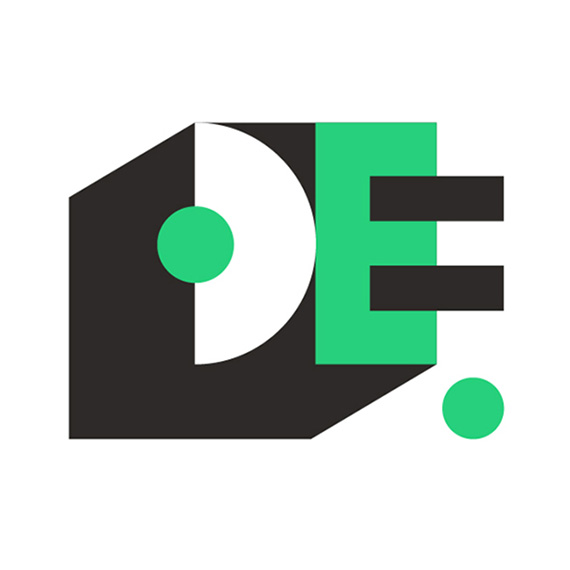26,000 Voices Reveal the True State of Inclusion in Schools
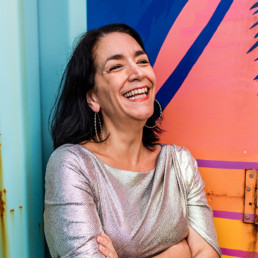
Written by Dr Nicole Ponsford
Dr Nicole Ponsford is an award-winning teacher, EdTech innovator, and doctoral researcher focused on equity and inclusion. She is the Founder and CEO of the GEC (Global Equality Collective)—a global movement of 20,000+ changemakers and 400+ DEI experts. Her research has informed GEC’s survey of 26,000+ students and staff (to date) on intersectional inclusion, shaping policy and practice. Recognised as one of Europe’s Top 50 Women in Tech, a National Diversity Awards 2024 finalist, and Computing Magazine’s Role Model of the Year, Nic also serves as Co-Head of Education at Microlink, championing inclusive learning through innovative design.
For the first time, 26,000 students and staff from over 350 schools and trusts have shared what inclusion really feels like—from corridors and classrooms to leadership, policy, and curriculum.
Published by the GEC, 26,000 Voices is the world’s largest and most intersectional study of inclusion in education. This report does more than highlight gaps—it hands leaders a blueprint for systemic change. At a time when education is at a crossroads, it offers something we’ve not had before: a real-world picture of how students and staff experience school—and what we can do to make things better.
More Than a Report: A Framework Built From the Inside Out
Inclusion is often treated as either a reporting requirement or a pastoral initiative—rarely both. That binary is holding schools back. Inclusion isn’t about box-ticking or reactive interventions. It’s about culture, systems, and leadership.
That’s why the GEC Platform was created. Developed by teachers, researchers, and inclusion experts—alongside five UK universities—it enables schools and trusts to see the full picture and act on it. At the heart of this approach is a new methodology: Kaleidoscopic Data.
Kaleidoscopic Data captures the intersectional, lived experiences of people in schools, revealing what traditional metrics can’t. By combining quantitative trends with qualitative depth, it ensures the voices of marginalised students and staff are no longer invisible—and that interventions are designed with, not for, those communities.
What the Data Reveals: Students
The student voice in this report is clear: many young people do not feel safe, seen, or supported in school.
- 64% of students say they don’t feel safe at school
- 30% of students from single-parent families have missed school due to safety concerns
- Just 18% of students with mental health needs feel supported to achieve
- 1 in 3 (33%) students with invisible disabilities say their needs are not understood in class
- Only 21% of LGBTQ+ students feel their gender identity is respected
What Helps: GEC Inclusion Actions for Students
- Collect anonymous student voice data to understand the needs of underserved groups. This should include how relationships and physical spaces affect students’ sense of safety and belonging.
- Use coaching circles and peer mentoring to rebuild trust and empower students to lead inclusively within their own communities.
- Equip staff with identity-informed coaching skills so they can support students with invisible disabilities or mental health needs more effectively.
- Use staff surveys to identify bias across the organisation. Provide LGBTQ+ inclusive training through structured, reflective CPD that centres student voice.
- Co-design safe spaces and coaching frameworks with students from single-parent households and marginalised groups to ensure solutions are rooted in lived reality.
- Adopt a trauma-informed, relational coaching model across all year groups—so inclusion becomes part of how teaching and support are delivered every day.
What the Data Reveals: Staff
Staff voices also reveal urgent inclusion challenges:
- Only 60% of staff feel they can be their authentic selves at work
- 62% of parent/carer staff feel excluded due to caregiving responsibilities
- Only 46% feel represented in school leadership
- 41% of staff with mental health or neurodivergent needs do not feel safe reporting issues
- Two in five staff say they need flexible working—or will consider leaving
What Helps: GEC Inclusion Actions for Staff
- Use anonymous staff surveys to surface the full spectrum of lived experiences, especially around identity, flexibility, and psychological safety.
- Create ‘safe spaces’ —both 1:1 and group, both anonymous and identified —where staff can reflect, share, and build self-advocacy skills.
- Offer inclusive leadership coaching to all line managers and management, focusing on belonging, identity, and equitable career routes and decision-making.
- Train all staff through structured CPD and coaching on flexible working, reasonable adjustments, and inclusive communication, especially for working parents and carers.
- Review representation in leadership pipelines through an intersectional and equity lens. Coaching can be used to build visibility, confidence, and sponsorship for underrepresented staff.
- Normalise mental health and neurodiversity conversations through coaching-led supervision, reflective practice, and wellbeing frameworks that go beyond tokenism.
Report and Support, Not Either/Or
The 26,000 Voices report offers:
- National benchmarks on inclusion
- Clear, actionable priorities for school and trust leaders
- Sector-specific recommendations for primary, secondary, FE, MATs, and AP settings
- A research-informed model for identifying and closing inclusion gaps
The GEC Platform builds on this by providing:
- Real-time dashboards showing inclusion patterns
- Contextualised reporting aligned to Ofsted and DfE frameworks
- Co-designed surveys developed with researchers and school leaders
- Action planning tools, CPD pathways, and measurable progress tracking
This isn’t about being told what to do. It’s about being supported to lead meaningful, sustainable change—ethically, strategically, and systemically.
Built by the Profession, for the Profession
This work comes from inside the system. As a former English teacher, senior leader, and now inclusion researcher and EdTech founder, I know how hard it is to turn good intentions into lasting impact. That’s why the GEC Platform doesn’t add to workload—it reframes it. With the right insight and support, inclusion becomes the foundation for improvement, not an add-on.
Start Next Term as You Mean to Go On
Want to see how the GEC Platform can support your setting?
- Download the full report:
www.thegec.education/the-research
- Book a 1:1 demo or call:
www.thegec.education/the-technology
Let’s turn these 26,000 voices into lasting, inclusive change.
What I’ve Learned About DEI and Education Since Founding Inclusion Labs

Written by Temi Akindele Barker
Temi Akindele Barker is the founder of Inclusion Labs, an organisation dedicated to amplifying every voice and co-creating a more inclusive future by using data as a foundation for change. Inclusion Labs partners with schools to gather, share, and activate insights from DEI surveys, driving meaningful and measurable change. Temi began her career as a consultant in Legal Executive Search, working in both the UK and internationally. She led senior teams serving US and UK law firms as well as financial institutions, helping local and multinational clients achieve their strategic goals.
Over the past few years, I’ve worked with schools across the UK (and beyond), collecting unfiltered experiences from every stakeholder – students, parents, staff, and leadership. We gather data across race/ethnicity, gender, sexual orientation, religion/belief, socio-economic status, disability, and more. No shortcuts. No hierarchy of oppression. It’s been eye-opening. Often heartbreaking. Occasionally enraging. Frequently hopeful. Always necessary.
Here’s some of what I’ve learned:
- Truth hurts. But it’s the only way forward
The flurry of statements after BLM and Everyone’s Invited felt urgent, but many faded fast. I’ve seen the sector swing from apathy to panic to action and back again. DEI work can’t solely be reactive. It must be rooted in truth, which is uncomfortable but essential. You can’t solve what you don’t understand. You can’t challenge what you don’t even know to question. You have to invite the conversations in (especially when uncomfortable) and create space to listen and learn. If you’re afraid to know the truth about your school’s culture, you’re not really being inclusive. - Passion > £££
Most school DEI leads have no budget. Many don’t even have ring-fenced time. What they do have in spades is passion and purpose. Some come from marginalised backgrounds, and most carry a personal “why.” It’s often a lonely, thankless task, yet they keep going. In our recent report, 20,000+ voices were gathered, supported by fewer than 30 DEI leads. Let that sink in. This work is fraught with differing opinions, often delivered unkindly. Yet these leads show up, time after time, with care and courage. They embody: it doesn’t have to happen to you for it to matter to you. - There’s joy and pain in having inclusion in your name
I named our organisation Inclusion Labs, and meant it. But it carries weight and expectations. “You call yourselves Inclusion Labs; you should have X as an option.” People assume your politics, your beliefs. Sometimes, you’re the only one in the room who sees the full picture. This work means accepting that you can never fully capture all the ways in which communities are diverse. And more importantly, it is not our job to decide whether someone’s identity is valid.
We are not here to judge or politicise – our role is to reflect back to schools who their community says they are right now. That comes with challenges. We might exclude someone by not including a category they feel represents them. Or offend someone else who believes listing too many categories is fundamentally wrong (“Why does sexual orientation have eight options?”)
But our job isn’t to gatekeep identity. It’s to hold space for both. And yes, that might mean someone gets offended. - Everyone must have a say. Even the ones you wish wouldn’t
DEI isn’t about echo chambers, so we don’t censor. We share every insight with schools – good, bad, ugly, bigoted. We’ve heard testimonies that are beautiful, funny, painful, hopeful, and some that are outright offensive. Everyone having a say means… everyone has a say. Some comments I’ll carry with me for life. Some made me laugh out loud (high five to primary students). Others made me cry with heartbreak. Doing this work has made me cry more in the past few years than in all the previous ones combined. I’ve said it once, I’ll say it again – doing this work, you see the best and worst of humanity. - Yes, there are (racist, homophobic, ableist…) teachers
Let’s just name it. Schools are a microcosm of society – they hold its brilliance and its bias. So yes, there are bigots in schools. It’s uncomfortable to admit. And yes, it’s disorienting to realise these individuals are tasked with teaching and supporting children. Sometimes you wonder: who among us is that person? But often the worst attitude comes from parents (who also choose to share views that are racist, homophobic, ableist…). Even inclusion surveys spark outrage – “Are you indoctrinating our children?” What they – in fact all of us – need to accept is that at any given moment, there might be one person that needs this work to be done – whether it’s for support, for correction, or for education (staff and parents included). - You will fail. You’re allowed to fail.
We need to stop demanding perfection. Schools aren’t DEI think tanks. They are made up of teachers trying to do their best with limited time, budget, and under incredible pressure. They will get it wrong. And that’s okay. We shouldn’t demand perfection – just passion and determination. Effort. Commitment. Willingness. That’s all we should ask. This work isn’t about perfection. It’s about progress. And mistakes will happen. We need to stop weaponising mistakes and start using them to fuel better choices. Because when a school gets it right, the wins feel that much better. - Same same, but different
Are the issues really that different from school to school? No – and yes. Same issues, different proportions. Every school has racism. Every school has sexism. Every school has kids struggling with identity, belonging, being “othered.” The difference lies in what schools do or have done with those truths. Our recent report highlighted the 15 most pressing themes from stakeholders themselves (what mattered most to them). Most schools will attempt to address some or all of them, but to varying degrees and success. - Sometimes you need to get out of the way
Those with lived experience: your voice matters. But anger (while valid) can create fear. And fear kills progress. If everyone’s too afraid to speak or try, if no one’s willing to step forward or take a risk, nothing changes and no one moves forward. Sometimes, we need to turn our pain into possibility and let clarity, not chaos, lead the way. - Sometimes it’s just a distraction tactic
Once at a school session, I told an anecdote about a maths teacher who asked if DEI work applied to them. They felt that certain subjects naturally fell under this area (English, History, PSHE) but they could not see this so clearly for their subject. I will not bore you with the details of our conversation, but needless to say, I shared this story to make the point that DEI is not reserved for English or PSHE. But I later heard that some maths teachers felt personally attacked, as they felt it positioned them as lacking empathy. A landmine I didn’t see coming. Dare I say, ridiculous to the fullest extent – and designed to be just that: a distraction. (And for clarification – maths teachers have empathy). - DEI awards are (mostly) nonsense
Let’s be honest: a lot of DEI awards are performative. Some are paid-for nonsense. I’ve had countless offers with no real understanding of our work – for a small fee, of course! If you want validation as a school? If you need to know who you can trust to do the work and do it well? Then word of mouth, every time.
Finally…
Inclusion is never about just schools. It’s always been about society. If we can embed inclusive values, attitudes and behaviours in our school communities – from 5-year-olds through to governors – then we stand a chance at changing the wider world. This sector has more work to do. So, continue listening. Continue telling the truth. Refuse to shut up. Keep calm and carry on.
Beyond Burnout: A Leadership Framework for Wellbeing That Lasts
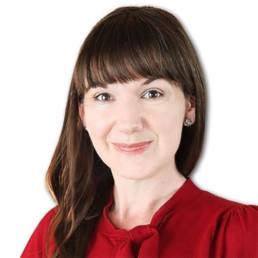
Written by Morgan Whitfield
Morgan Whitfield is an experienced senior leader and professional development consultant who advocates high-challenge learning. Morgan hails from Canada and has taken on such roles as Director of Teaching and Learning, Head of Sixth Form, Head of Humanities and Head of Scholars. Her book Gifted? The Shift to Enrichment, Challenge and Equity, reframed “gifted” education as a mandate to provide enrichment and challenge for all students. She is a passionate advocate for equity in education, a BSO inspector, radio show host and mother of three brilliant little ones. Morgan has worked with schools across the Middle East, Asia and the UK and currently lives in Vietnam.
As the academic year draws to a close, the school finally exhales. The corridors fall quiet, the calendar clears, and the pace begins to slow. After weeks of farewells, final reports, and frantic last meetings, we find ourselves in that strange stillness that follows a year lived at full speed.
It is often in this moment, when the adrenaline fades, that exhaustion catches up with us. For many educators, the end of term is not a time of celebration but of sheer survival. Burnout is not a new conversation in education. But it is a necessary one.
This year, I have been reflecting deeply on what it really means to see the wellbeing of our colleagues. Not just to discuss workload, have a yoga session or introduce a mindfulness app. But to truly notice, reach out, listen, and build the kind of trust that allows people to say when they are not okay.
Wellbeing is not a side project. It is the foundation of a thriving school culture.
Next academic year, I intend to embed this belief more intentionally into my leadership practice. This wellbeing framework is drawn from conversations with colleagues, coaching reflections, and lessons learned the hard way. Some of these actions are already part of how I lead. Others are areas I am actively working on. All are grounded in the kind of leadership I want to grow into.
-
Leading with empathy and emotional intelligence
Empathy begins with presence. It is in the quiet pause after a difficult meeting, when I stay behind and ask someone how they are really doing. It is in recognising when a team member needs flexibility, not pressure. I try to stay attuned to how people are feeling and what might be unsaid. I want to respond not with assumption, but with understanding. I am also working to become more intentional about recognition, regularly pausing to acknowledge small wins and show appreciation. Next year, I want to make even more space for human-centred conversations, and to ensure equity drives not only what we do but how we do it.
-
Being present, accessible and action-oriented
I have learned that presence is more than visibility. It is about showing up fully. I try to be there, at the door of a classroom, in the staffroom, or at a team meeting, with my attention undivided. I have become more conscious about setting aside time to listen, and I want to keep improving how I respond to feedback. Next year, we need to have more staff-led initiatives and co-designed solutions, and I have seen how much more sustainable change becomes when people feel they helped shape it. Going forward, I want to be more systematic in how I gather and act on voice, and ensure the ‘follow-through’ feels as visible as the listening.
-
Communicating with clarity and sharing ownership
In a busy school, unclear communication adds unnecessary stress. I try to communicate as clearly and purposefully as I can, especially in briefings, strategy updates, or leadership meetings. But I know I still have room to grow here. Next year, I want to slow down and explain the ‘why’ more consistently, not just the ‘what’. I also want to keep improving how we invite staff voice at every level- not as a token gesture but as a core part of how we work. This means involving people earlier, making consultation processes more open, and building time into systems for shared thinking and collaborative planning.
-
Building trust through connection and collaboration
Trust is built through consistent, respectful connection. I have seen the difference it makes when I show up in coaching conversations with genuine curiosity rather than judgment. When I take time to listen deeply in difficult moments. When I share vulnerability instead of hiding behind expertise. I want to do more to create spaces for collaboration across teams and roles, and to help people feel psychologically safe enough to speak openly, disagree productively, and show up fully. Trust, I am learning, is not built through grand gestures but in the quiet, daily actions of relational leadership.
A Hopeful Pause
For now, I am grateful for the pause of summer. For the chance to breathe, reflect, and recalibrate. I remain committed to returning with purpose, to help shape school cultures where people feel seen, valued and sustained. Our wellbeing matters, not only for ourselves, but for the young people we serve. Schools should be built on the foundation of empathy, respect, and heartfelt connection. When leadership is infused with genuine humanity, transformative change naturally follows.
A Leadership Framework for Wellbeing
- Lead with empathy and emotional intelligence
Leadership should be emotionally attuned, grounded in empathy and emotional awareness.
Decisions are made with understanding, not assumption.
People are recognised, celebrated, and treated as individuals, not just roles.
Human-centred decision-making is a priority. - Be present, accessible, and action-oriented
Leadership is visible, present, and willing to pause.
Feedback is a dialogue, actively invited and used to co-create solutions.
Input leads to action, with clear follow-through.
Diverse voices are included and valued in every stage of decision-making. - Communicate clearly and share ownership
Communication is honest, purposeful, and transparent.
The ‘why’ behind decisions is always shared, not just the ‘what’.
Clarity is prioritised to reduce ambiguity and confusion.
Staff are meaningfully involved in shaping the path forward. - Prioritise connection and trust
Support takes precedence over supervision.
Connection, collaboration, and trust are woven into leadership practice.
Safe spaces are created where staff can bring their whole selves to work.
Wellbeing is not an extra, but a foundational lens for leadership.
Resources:
Wellbeing is being seen, heard, valued and invited
https://docs.google.com/presentation/d/1-8kWq-RrI44o7pFkfhbWExLe8FvcKbjIwO2RGmaOiJ0/edit?usp=sharing
Two faces of a coin
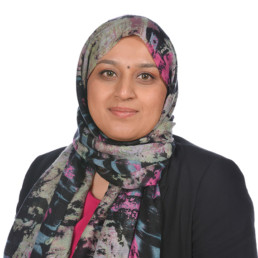
Written by Umara Qureshi
Umara Qureshi is a passionate and values-driven Head of School with a proven track record of securing strong outcomes across a range of settings—including the successful launch of a start-up school. Deeply committed to equity, inclusion, and social justice, she believes in the transformative power of education to change lives. Umara leads with integrity, fosters cultures of high expectation and belonging, and champions staff development, pupil voice, and ambitious opportunities for all learners.
Growing up as a British ethnic minority girl in south east England in the 1990s, I was oblivious to my dual nationality, my ethnicity being a minority and that I essentially lived in two different worlds.
And it was with great ease that I transitioned from one world to the other. I was able to behave according to the expectations of the community I found myself in and it was absolutely natural to adapt etiquette and lifestyle. Being able to adjust and adapt into two contrasting cultures and societies was automatic. It was absolutely normal to have two identities. It was and is so easy to switch either on or off or fuse the two together. And I believe that is the beauty of having two faces to a coin.
During adolescence, I was lucky enough to be around peers from a similar background. My culture was accepted. As teenagers, I explored and shared cultures with my friends from different ethnic backgrounds and we celebrated our identities. It was normal for us to be different. I think that’s the beauty of growing up in Luton. As I grew up, there were more cultures I was exposed to. It was lovely just meeting them and getting to know them, and sharing our cultures and celebrating our differences.
The ease of social and cultural fluidity became a burden as the issue of identity and the social pressure increased into adulthood. And I don’t think that’s inevitable. I think it’s perceptive. Social media is the greatest platform for people to express their identity issues and exposure to such material festers insecurity. Movies like ‘Bend It Like Beckham ‘ exacerbate identity crises as they focus on the dilemmas that not belonging to one culture can create and portray it as a hindrance. It loudly suggests that holding onto traditional culture will hold girls back from fantastic careers. This is untrue and an injustice to ethnic minorities. Unknowingly you develop a perception of having the same inferiority that others express, regardless of your own experiences and successes. I only realised how I feel about these portrayals when I watched it with my daughter and saw the seeds of identity crisis being sown with adult eyes. The need to impress, be like others around and the desire to not be different becomes prevalent and feeds the identity issue.
I was lucky enough to have many role models giving me the confidence to continue celebrating my ethnicity, nationality and culture but I met lots of people from the same background as me, who weren’t proud of it and who didn’t like it. I even know people who say that they have no ethnicity and they don’t consider themselves to have any ethnicity. I can’t pretend that I didn’t feel the burden and pressure too. The pressure to be the same as others puts doubts in your mind and it makes you think that you’ve drawn the short straw because you face challenges around your identity. Feeling as though you don’t fit in with people around you and you are looking at one particular group and wondering why you couldn’t have just been like them so that you didn’t have to face these challenges. However, I believe that we’re very lucky to have two sides. The beauty of being British Asian, is that you’ve got a double identity, you’re not two halves. I think that’s looking at the glass being half empty, when in fact, the glass is doubly full.
The greatest assumption that people make is that all British people lead the same lifestyle and that’s not true. Within British communities, individuals do not all do the same things. And there is not an expectation for every British person to fit a stereotypical, specific lifestyle to be accepted or successful. I believe that this is the biggest misconception. Even if you do not do things in the same way as others around you it does not hinder you in leading a successful life.
The key points for me are that we have additional lifestyle choices, lifestyle events, skills, languages, culture, processes, emotions, personal family links and social attributes stemming from our ethnic background that enhance us as people and do not limit us.
We have our ethnic background and we also have a British background. We can pick, choose, fuse and innovate. So we’ve got more to our lives, not less. Having these two identities has doubled our life experiences, not halved it. We’re not torn between two worlds, we are spread across two worlds. Not everyone has this option. It is an existence to celebrate, not to be conflicted about. We shouldn’t be conflicted. We should recognise that we do have more to offer. We have a lot more to offer as we’re always steering the way on this newly paved pathway and balancing the vast knowledge, experience, pleasures, perks, broad mindedness, inclusivity and diversity. We need to recognise the potential that we have. Stop being a coin with two faces, embrace your potential and become three dimensional.
We have greater potential being multi-faceted. Having this rich ethnic / nationality is a combination that makes our life doubly wholesome.
The empty deserts sun scorched surface
In the moonlight is tormented by a cold menace
How blissful the union of the sun and moon could be
The immense respite and relief it could bring
The vibrance of the butterfly is unknown in the cocoon
Emergence from confinement allows the beauty to bloom
How proud, bold and brave it has to be
Its display and its presence makes the natural world sing
Reflections on an Unseen Mind: Rethinking Education Through a Neurodiverse Lens
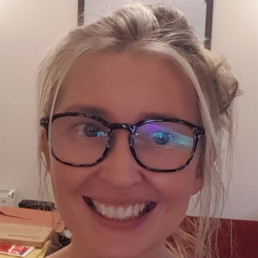
Written by Angel Hinkley
Mathematics Teacher & facilitator of the Anti-Racism Society at Drumchapel High School.
Just finished watching Jamie Oliver’s programme on dyslexia, and I’m left with so many thoughts—questions buzzing in my mind, especially as someone who is dyslexic myself. These questions feel so fundamental — yet perplexingly remain on the periphery of our educational discourse.
Why, truly, is early diagnosis not treated as an absolute, non-negotiable priority? What kind of training will teachers actually receive—training that helps them recognise dyslexia, nurture different minds, shift their understanding, reshape their approach, and see the brilliance beneath the difference? Who writes these programmes? Who decides? And crucially—will any of the architects have walked this path themselves, peering through the same fog, navigating the same hidden gaps?
Before I started school, I felt… normal. Confident. My dad said I knew my own mind. I was curious, chatty, and bold. Part of growing, of course, is the necessary challenging of that self-assurance, a healthy friction. But what awaited me was not friction, but an unhealthy shift, a fundamental reordering of my landscape that would cast long, often difficult, shadows.
The first chill of difference settled in a primary school classroom. Something about the learning – the way letters danced, the way sounds refused to anchor themselves to symbols – felt intrinsically wrong. I’d just been given glasses, and I recall my father’s anxious voice, wondering aloud if these new lenses were the problem: “My daughter has turned thick!” Harsh words, yet spoken not in cruelty, but in the fear of a parent watching his child struggle, change, her spark dimming and not knowing why.
My dad sought answers at a specialist centre. I remember the tests vividly. Not the content, but my desperate strategy: to outsmart them. To answer not as I would, but as I imagined a ‘normal’ person would. I didn’t want to be me. And then came the diagnosis: dyslexia. I felt it. Deeply. They told my dad that the good news was I had worked so hard in the tests, I might one day be “average.”
Average.
The consolation? That the effort I’d exerted in trying to conform was ‘outstanding!’ With such effort, they predicted, I might one day become ‘average’! I knew that ‘average’ was no comfort to a father’s hopes. I felt broken and flawed. The implication was clear: my inherent way of thinking was a deficit, my ‘normal’ was unacceptable, and the highest aspiration offered was mediocrity measured against a standard I could never truly meet. What I didn’t yet understand was that I was navigating not my own failure, but the failure of a system that couldn’t see me.
But that very day, my dad turned it into joy. We did what Londoners, rushing headlong through their own lives, so rarely do: we became tourists in our own city. We paused before landmarks we’d never really seen—Parliament, the Tower, the Thames, the Changing of the Guard, St Paul’s with its whispering galleries. To this day, I still love to go there, with such fond memories in my mind—fun, love, comfort and self-assurance; forever etched my heart. It was, I think, the seed of the resilience I would come to need. Because school didn’t get easier.
The remaining primary years unfolded with a particular kind of quiet humiliation. My books contained few words—simple stories, devoid of the depth that excited my curious mind, hidden under the desk in shame. I was taken from the classroom for ‘special lessons’, but I couldn’t tell you what I learned—only how it felt to leave the classroom: different, embarrassed.
Education became a world where I was perpetually misunderstood. Learning was relentlessly dumbed down. Later choices only compounded the frustration: English Literature was replaced with Typing (a cruel irony for any dyslexic!), and Classical Studies replaced Latin — a subject I now realise could have helped me, through the understanding of word structure and roots: morphology.
Dyslexia, I have come to understand, is complex. It is, fundamentally, a different way of learning. It is also, undeniably, a disability. Even typing that word, owning it, is hard. I say it with reluctance. Mainly because of the world’s ongoing inability to understand it without seeing it as something lesser. People still judge.
But the truth is, navigating the world through a different lens brings unique strengths. And yet, within our education systems, we remain anchored to the standard measure.
It’s taken me decades to learn that some of my struggles—like not hearing certain phonetic sounds—were neurological. I’ve had my hearing tested countless times. Turns out, it wasn’t my ears—it was my brain. No one told me that. I found out from a documentary. If diagnosed early, those sounds could’ve been taught, reshaped in my brain’s formative years. That early window—so often dismissed—matters. It could have spared the burden I carry every day.
For me, this auditory gap is profoundly disabling. Because when you can’t hear a sound properly, you can’t pronounce it. And when you can’t pronounce it, you can’t spell it. The cycle repeats.
Correction becomes constant—and even well-meaning correction starts to sting. Sometimes, the correction offers a fleeting clue. Mostly, it washes over me, leaving only a residue of quiet despair. Negative thoughts creep in. Do they think I simply wasn’t paying attention? Do they think I’m stupid? Beneath the surface lies a persistent whisper: I am stupid. I know I’m not. But feelings rarely ask permission from logic. It reinforced that deeper feeling of a system not seeing me. Only my mistakes. I mask it well, most people would never guess.
Yet, amidst these shadows, glimmers of hope emerge. Remarkable work is being done—work that focuses not on forcing the dyslexic brain into a neurotypical mould, but on teaching it in the way it learns best. I’ve discovered morphology— the structure, origin, and meaning of words. Learning to break down words into roots, prefixes, and suffixes has eased the burden of spelling and pronunciation. It’s been a quiet revelation. As an adult, time is limited, and progress is slow but undeniable within the safety of my own home. But out in public, where my confidence falters, the words still come out wrong. Had this been the way I was taught in school, it would have ignited my mind and my pronunciation and spelling would have improved.
I also discovered SQR (Survey, Question, Read) —a structured strategy to navigate dense texts. First, you survey the text (titles, headings, summaries). Then you question—what do I want to learn? Finally, you read actively to find key ideas. This gives reading structure and purpose—an intellectual pathway I wish I’d known earlier.
How many classrooms teach strategies like these? How many teachers even know they exist—or are given the time to explore them? What else is out there, still undiscovered?
The concept of “mixed abilities” feels ripe for reimagining. It shouldn’t merely be about different paces on the same track, but about genuinely exploring how we learn differently, how our diverse strengths can weave together to create a richer understanding. It should expand our notion of intelligence, not constrain it.
I work with many neurodiverse young people, including those who are autistic, those with ADHD, and those whose paths diverge from my own. Each day, their unique lens on the world — their capacity for empathy, their brilliant insights — deepens my understanding — my passion for life. I listen. They teach me how to teach. They show me how wide the world truly is. Yet I, too, must navigate it—stuck within the rigid constraints of education itself. And it’s a constant balancing act. But I see the cost. I see the toll it takes on these young people—the strain on their mental health, the erosion of their resilience, the crushing weight of perfectionism; a common trait in those who feel they don’t belong but are desperately trying to. The fear of imperfection is ever-present.
I hear the echoing mantra of ‘raising attainment.’ And then I think of what Jamie Oliver’s programme reminded us: we, the neurodiverse, make up around 25% of every classroom. One in four. That’s not a problem to be fixed. That’s a revolution waiting to happen. And still… we lose too many. Bright minds stranded on the shores of a curriculum that never saw them. Children who think they are broken, simply because the mirror they’re shown is cracked and narrow. I see it and feel it in them.
And what is attainment measured by? Tests designed for neurotypical processing? By curriculum that value rote learning over deep structural understanding or creative insight?
So, I write this for them. For the children still sitting in classrooms thinking they are less. For the educators who are trying—but feel unsure, overwhelmed, or simply don’t have the time to learn and explore. For the architects of future programmes: please, build with us, not just for us.
We are not broken. We are not failed versions of a system that was never built for us. We are different minds, with different strengths, waiting not to be fixed, but to be seen.
The Hidden Wounds of Leadership: When Strength Becomes Survival
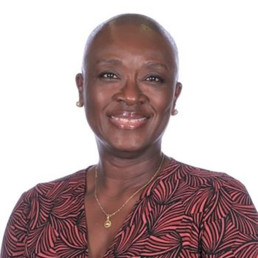
Written by Remi Atoyebi
Remi Atoyebi is an experienced Headteacher and ICF Certified Transformational and Leadership Coach. She is a contributor to The Headteachers’ Handbook and a mentor to over 50 school leaders across the UK. As a leader from a Global Majority background, she is passionate about inclusive leadership, psychological safety, and creating safe spaces for underrepresented voices.
As one of just a handful of leaders from a Global Majority background in the area I serve, I’ve had to do more than lead a school. I’ve had to build trust from the ground up, raise community aspirations, and create a sanctuary of belonging for children who had so often been left behind. Publicly, I was praised. Data climbed. Headlines followed. People saw progress.
But what they didn’t see was me.
They didn’t see the toll it took: emotionally, mentally, physically, to keep showing up, every single day, as the “strong one.” The “resilient” one. The one who could weather it all. Behind the applause, I was slowly falling apart.
As a Black woman in leadership, I became an expert at navigating systems that were never designed for me to thrive in. I wore the armour of excellence because I had no choice. I bore the weight of expectation, not just professionally, but culturally: the silent pressure to prove, to represent, to protect. I was leading a school, yes. But I was also holding up the dreams of my community, the pride of my family, and the unsaid duty to never falter.
Then one day, my body gave in. I was taken by ambulance from work to A&E. I had suffered a Transient Ischemic Attack (TIA): https://www.nhs.uk/conditions/transient-ischaemic-attack-tia/ and soon after, I was diagnosed with Post-traumatic stress disorder(PTSD): https://www.nhs.uk/mental-health/conditions/post-traumatic-stress-disorder-ptsd/overview/
These events were not from one tragic moment, but from the relentless drip-feed of stress, microaggressions, harassment, racial trauma, and systemic pressure that had compounded over years.
The trigger was one parent’s sustained harassment over two and a half years: sometimes emailing up to three times a day to make unnecessary demands, engaging in attention-seeking behaviours, inciting other parents, and making incessant reports to the Local Authority Designated Officer (LADO), Office for Standards in Education, Children’s Services and Skills (OFSTED), the Teacher Regulatory Agency (TRA), and the Information Commissioner’s Office (ICO).
I had been leading while bleeding.
This is what we don’t talk about enough. The unspoken cost of being the first. The only. The one expected to be everything to everyone. For many Black women in leadership, success often comes wrapped in loneliness. We carry the school, the staff, the children, their families and then we carry what no one else sees: the barbed comments, the subtle exclusions, the extra scrutiny.
Over time, I’ve come to name this for what it is…structural neglect. Not always overt. Not always intentional. But neglect nonetheless: of our wellbeing, our emotional safety, our humanity. Mental health services are not culturally competent. DEI work barely scratches the surface. And leadership frameworks rarely account for the invisible labour of navigating bias and battling stereotypes.
The Equality Act 2010 lists both Race and Disability as protected characteristics. But where was the protection when I was unravelling from the inside out? Where were the policies that acknowledged the trauma of ‘performing strength’ in the face of constant pressure? Where was the care for leaders like me?
And let’s talk about race and mental health. Black women are less likely to be referred for therapy, more likely to be misdiagnosed, more likely to go unheard. (https://www.mind.org.uk/information-support/tips-for-everyday-living/racism-and-mental-health/#HowRacismCanAffectYourMentalHealth).
In leadership, the expectation to remain poised and polished becomes a ‘prison’. We silence our needs just to be seen as competent and effective.
So, how do we disrupt this?
We start by telling the truth. We say out loud that leadership takes a toll. We give permission to ourselves and others to feel, to pause, to say “this is too much.”
We embed trauma-informed approaches not just for children, but for the adults in our schools, especially those living through racialised experiences. We make room for healing. For culturally competent therapy. For coaching that holds space rather than just drives outcomes.
We must let go of the myth that strength means silence, and in its place, we embrace a deeper truth that vulnerability is not weakness, it is wisdom. It is the path to healing, to connection and to lasting change.
I’m still healing. I’m still learning how to lead without sacrificing myself. Still untangling from a version of success that asked me to shrink, to be silent, to disappear. But no more. From here on, I will be leading differently: to protect my health, my wellbeing and ultimately, my life.
And if my story does anything, I hope it reminds someone, maybe you, that you are not alone. That leadership must never cost you your health. That you don’t have to break to belong and succeed.
Leading with Heart: Why Humanity Belongs in Leadership
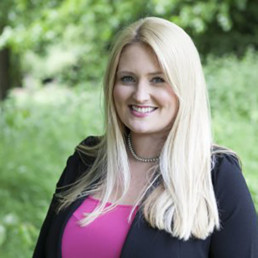
Written by Sarah Mullin
Deputy Headteacher and EdD student
When Chancellor Rachel Reeves appeared tearful during Prime Minister’s Questions, it became national news. Speculation followed. Some questioned her professionalism. Others expressed empathy. But what if her emotion wasn’t about weakness or pressure — what if it simply showed that she cared?
We may never know what Reeves was feeling, and that’s not the point. What matters is how society responded. In contrast, when Prime Minister Keir Starmer’s voice cracked with emotion moments earlier, many praised his sincerity. The double standard reminds us that we still judge emotional expression differently in men and women — and that’s something schools have the power to change.
In my doctoral research with women secondary headteachers, many shared the pressure to appear composed at all times. One told me:
“I’ve learned to hide my emotions because if I show them, people assume I’m not coping.”
Another said:
“I care deeply about my staff and pupils. But there’s still a sense that to be respected, you have to be hard.”
This expectation isn’t just unfair — it’s limiting. When we reduce leadership to stoicism, we ignore the relational skills that make leaders truly effective: empathy, emotional intelligence, and care.
That’s why these public moments of emotion matter. Because our young people are watching.
Girls need to see that leadership doesn’t require hiding your feelings or shrinking your identity. That you can be strong, successful, and still be yourself. And boys need to see that care and vulnerability aren’t weaknesses — they are part of responsible, emotionally mature leadership.
In schools, we have the chance to model a broader, healthier version of what leadership looks like — not just in what we say, but in how we lead. Staff and students alike benefit from environments where humanity is welcomed, not hidden.
Let’s create a culture where showing heart doesn’t undermine leadership — it defines it.
Courageous Conversations
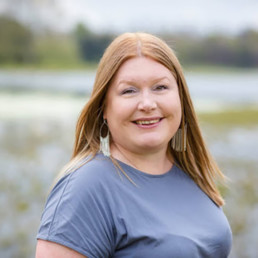
Written by Hannah Wilson
Founder of Diverse Educators
What is a Courageous Conversation?
In courageous conversations, whether in the context of performance appraisal, mentoring, or coaching, individuals are encouraged to express their views openly and truthfully, rather than defensively or with the purpose of laying blame. Integral to courageous conversations is an openness to learn.
What Is an Example of a Courageous Conversation?
Typical examples include handling conflict, confronting a colleague, expressing an unpopular idea on a team, asking for a favour, saying no to a request for a favour, asking for a raise, or trying to have a conversation with someone who is avoiding you. Research shows that many women find such “courageous conversations” challenging.
How Do You Frame a Courageous Conversation?
- Set your intentions clearly.
- Create a container.
- Prepare facilitators & groups.
- Set it up.
- Open with vulnerability.
- Have the discussion.
- Come back together and close.
- Support each other.
What Does the Research Tell Us About Courageous Conversations?
According to the work of Susan Scott there are The Seven Principles of Fierce Conversations:
- Master the courage to interrogate reality. Are your assumptions valid? Has anything changed? What is now required of you? Of others?
- Come out from behind yourself into the conversation and make it real. When the conversation is real, change can occur before the conversation is over.
- Be here, prepared to be nowhere else. Speak and listen as if this is the most important conversation you will ever have with this person.
- Tackle your toughest challenge today. Identify and then confront the real obstacles in your path. Confrontation should be a search for the truth. Healthy relationships include both confrontation and appreciation.
- Obey your instincts. During each conversation, listen for more than content. Listen for emotion and intent as well. Act on your instincts rather than passing them over for fear that you could be wrong or that you might offend.
- Take responsibility for your emotional wake. For a leader there is no trivial comment. The conversation is not about the relationship; the conversation is the relationship. Learning to deliver the message without the load allows you to speak with clarity, conviction, and compassion.
- Let silence do the heavy lifting. Talk with people, not at them. Memorable conversations include breathing space. Slow down the conversation so that insight can occur in the space between words.
From Silence to Story: How My Autistic Son Inspired a New Chapter in Inclusive Literacy
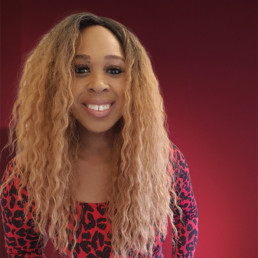
Written by Pamela Aculey
Pamela Aculey is an award-winning author, public speaker, and the founder of Just Like Me Books and MIXD Reality—the creators of the world’s first inclusive augmented reality picture book. Inspired by her autistic son Walter, Pamela is passionate about using storytelling and technology to create inclusive, interactive experiences that reflect the beautifully diverse ways children see and engage with the world. She is also a full-time carer and advocate for representation in education and beyond.
They say necessity is the mother of invention. But for me, motherhood itself sparked an invention that would not only change how my son reads, but how countless children see themselves in stories.
My journey with autism, storytelling, and technology began with my eldest son, Walter. A bright, beautiful mixed race boy who, in his early years, struggled to communicate verbally. Walter is autistic and was non-speaking until the age of 7. As a parent, nothing prepares you for the silence—especially when all you want is to hear your child say “Mummy.” But in that silence, I learned to listen differently. I began to see the world through Walter’s eyes: colourful, musical, expressive in ways that didn’t require words.
Books became a lifeline. But while reading to Walter, I noticed something glaringly absent—him. None of the characters looked like him. None moved, spoke, or communicated like him. Representation wasn’t just lacking; it was almost non-existent. I wasn’t just searching for stories; I was searching for mirrors.
And one day, in the silence, Walter showed me what connection could look like.
He had one particular book he returned to every single day. He’d scan the pages, then walk over and hand it to me—always open to the same page. He’d hum and flap the book gently in front of my face. I assumed he wanted me to read the story—again—for what felt like the tenth time that day. So, I would.
But then Walter would get upset. Irritated.
He’d snatch the book out of my hands and throw it to the floor.
And a few minutes later? He’d bring it back and start the whole process again.
I was confused. Frustrated. Heartbroken.
Until one day, I paused long enough to really look at the page he kept coming back to.
It was an image of a little boy drinking water.
Suddenly it hit me:
Walter wasn’t asking for a story.
He was trying to tell me he was thirsty.
That moment changed everything. My little boy, who didn’t use words, had found his own way to communicate. He didn’t need language—he needed connection.
That’s when the idea behind Just Like Me Books was born. I wanted to create stories that reflected children like Walter—not only in how they look, but in how they experience the world. Our debut title, Buster Finds His Beat, follows Buster, an autistic, music-loving mixed-heritage boy who communicates using beats, rhythm and music. Sound familiar? It should. Buster is inspired by Walter.
To bring the story to life in a way that resonated with children like him, I incorporated augmented reality (AR). I created an app where children can scan the pages and watch Buster dance, laugh, and play drums in 3D. For neurodivergent readers, this fusion of storytelling and sensory experience offers not only joy but accessibility.
Seeing themselves in stories is one thing. Interacting with them? That’s a whole new world.
This innovation became the foundation for MIXD Reality—a creative tech company I co-founded to explore how immersive technology can transform learning, reading, and communication. We now partner with educators, publishers, and brands to create AR-powered experiences across industries: from children’s books and emotional literacy tools to museums, healthcare, and financial literacy.
With nearly 1 in 7 people identifying as neurodivergent (NHS England), we need more than just good intentions—we need practical, inclusive resources. Traditional classroom tools often leave behind children who process the world differently. AR bridges this gap by turning passive reading into an interactive journey that supports diverse learning styles.
We are currently in the early stages of conducting our own research to explore how augmented reality can support autistic children aged 5–8. We are actively seeking partnerships with families and organisations to help us carry out this important work. If you would like to be part of this, please get in touch. Because innovation shouldn’t be reserved for the few—it should uplift the many.
I’ve watched Walter go from being non-speaking to now writing his own short stories—and talking all the time! He’s 11 now, and still beats on everything—tables, tubs, anything that makes a sound. But more importantly, he reads. Not because he has to, but because he wants to. And when he saw himself in Buster, he beamed.
That smile reminded me why I started this work in the first place.
We often talk about diversity and inclusion in terms of policy, but what about practice? Are our bookshelves inclusive? Are we designing content with all learning styles in mind? Are we creating mirrors and bridges?
My hope is that Just Like Me Books and MIXD Reality spark more questions, more conversations, and more creativity.
Because every child deserves to be the hero of their own story—and sometimes, all it takes is pausing long enough to really look at the page they’re holding.
BLAM UK BOOK: Global Black Narratives for the classroom: Vol 1 & 2
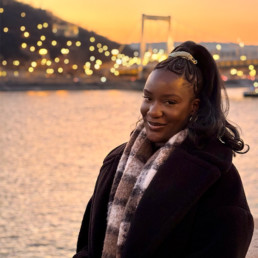
Written by Bettina Ogbomoide
Project Coordinator at BLAM UK (Black Learning Achievement and Mental Health UK). Passionate about Black studies, and dedicated to educating and exploring the cultures and histories of the African diaspora.
Too often, Black history is limited to the margins of the school calendar, and only acknowledged during Black History Month, which also normally tends to focus on specific narratives i.e. the transatlantic slave trade or the civil rights movement in America. This approach not only restricts the richness and diversity of Black experience, often excluding Black Britain altogether, but also squanders the opportunity to engage students with a fuller, more accurate version of global and British history.
At BLAM UK, we believe that Black history is not an add-on, but rather it is an integral part of understanding the world we live in. This is why we developed Global Black Narratives for the Classroom, a two-volume educational resource designed to facilitate primary school teachers to embed Black history, including British and global narratives throughout the academic year. Rooted in England’s National Curriculum, the books aim to save teacher’s time, boost their confidence and subject knowledge, and make it easy to teach global Black histories in a way that is accessible and inclusive.
Volume 1: Black Britain and Europe
The first volume focuses on the histories of Black communities in Britain and across Europe. It offers creative lesson plans for themes ranging from early Black presence in Tudor England to 20th-century activism and cultural movements. By highlighting figures such as Claudia Jones, Olive Morris, and Josephine Baker, the book challenges educators to expand their understanding of British and European history beyond narrow Eurocentric, male-domoinated, traditional narratives.
Volume 2: Africa, the Americas, and the Caribbean
The second volume provides a broader global context. It provides a deep dive into African histories before colonialism, the cultural traditions of the Caribbean, and the layered experiences of Afro-descendant communities across the Americas. Through guided activities and thought-provoking content, students are encouraged to explore the global interconnectedness of Black narratives and resistance.
Both volumes are filled with practical tools which include lesson plans, engaging worksheets and creative activities, making it easier for teachers to deliver high-quality lessons with confidence and cultural sensitivity.
At its core, Global Black Narratives for the Classroom equips educators with the toolkit they need to centre Black perspectives in the curriculum, not just occasionally or tokenistically, but consistently and meaningfully. By doing so, we not only enhance the learning experience for all students, but we also create a more inclusive and culturally relevant and responsive educational environment.
Teachers who are seeking to counter the narrow, divisive rhetoric we are seeing increase, or are committed to anti-racist pedagogy will find in these books an invitation for reflection and the opportunity to increase your subject knowledge. All whilst encouraging critical thinking, and opening up space for alternative perspectives and more diverse stories to be told in the classroom.
You can purchase Global Black Narratives Volumes 1 & 2 from independent, Black-owned bookstores Book Love and Afrori Books, as well as Amazon, and Routledge.
Please see the links below to purchase:
Book Love (Black-owned anti-racist bookseller)
Vol 1: Global Black Narratives for the Classroom Africa, the Americas and the Caribbean
Vol 2: Global Black Narratives for the Classroom: Britain and Europe
Afrori Books (Black-owned independent book shop)
Brighthelm Church & Community Centre, Brighton and Hove, Brighton BN1 1YD
Vol 1: Global Black Narratives for the Classroom: Black Britain and Europe –
Vol 2: Global Black Narratives for the Classroom: Africa, the Americas and the Caribbean
Routledge
Vol 1: Global Black Narratives for the Classroom: Black Britain and Europe
Vol 2: Global Black Narratives for the Classroom: Africa, the Americas and the Caribbean
Amazon
Vol 1: Global Black Narratives for the Classroom: Black Britain and Europe
Vol 2: Global Black Narratives for the Classroom: Africa, the Americas and the Caribbean
Order our book and spread the word!
BLAM UK is here to transform the way we think about Black narratives, one classroom at a time!

